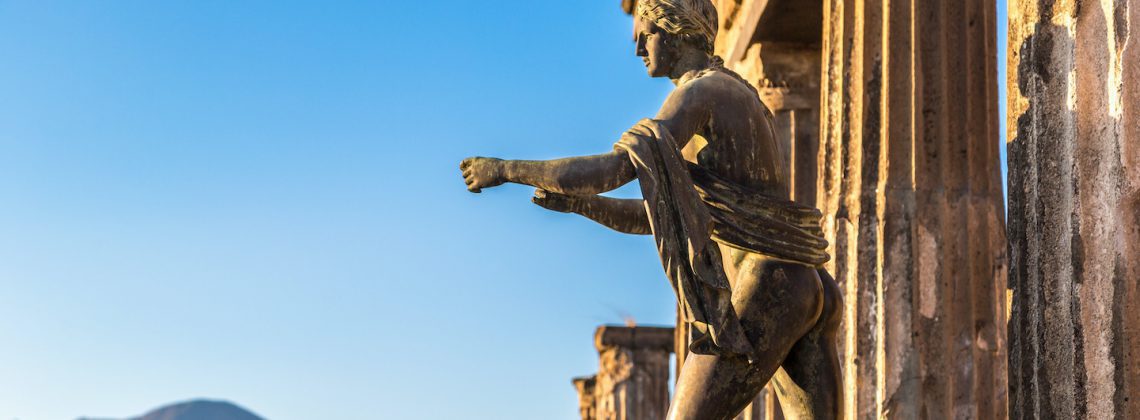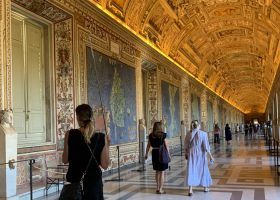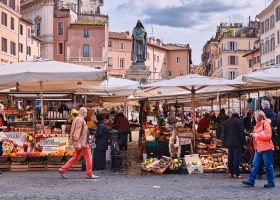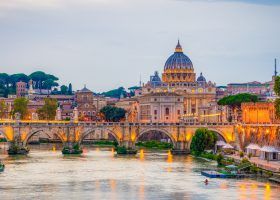Planning a visit to Pompeii but not sure what to see? You’re in luck for two reasons. First, there is a ton to see in Pompeii. The city was “flash-frozen” by the eruption of Mt. Vesuvius with almost no warning. That makes it arguably the best-preserved archeological site of its size on Earth. The second reason you are in luck is that we ask our local guides to create this comprehensive article on the 15 things you need to see when visiting Pompeii with explanations.
Pro Planning Tip: Consider bookmarking this article into a “Pompeii” folder in your browser. This way you can circle back to it while planning. Also, check out our most popular Pompeii tours. This article is here to help but the best way to see Pompeii is with a licensed guide of the area.
15 Things to See in Pompeii with Descriptions
Pompeii was a booming port city in the Ancient Roman Empire of over 20,000 residents. The fate of all that changed on August 24th, 79 AD when the volcano Mt. Vesuvius erupted and shot a 10-mile high mushroom cloud of ash and pumice into the stratosphere. Consequently, those who were not killed by the missiles of pumice coming down or the lava were wiped out by the toxic gases that took over the area, essentially suffocating everyone.
As a result of the eruption, the volcanic ash and mud shielded the city’s artifacts from destruction and preserved a ton of history. Therefore, to this day you can still see some of the bodies, clothes, and even places of business that have been preserved from the eruption. Ironically, this disastrous day for the Romans has created for the modern man an intimate look into what life was like in an Ancient Roman city.
1. The Amphitheater
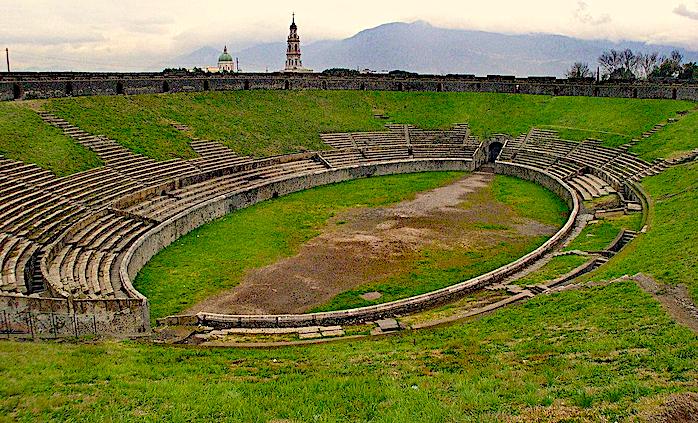
This is the oldest known amphitheater in Ancient Rome. In ancient Greece, theaters were typically carved into the side of a mountain or hill and were therefore always semi-circular. The Romans being extremely pragmatic realized that if you put two of these theaters together you would get a 360-degree view.
It was built in 70 BC by the magistrates Caius Quinctius Valgus and Marcus Porcius and could hold 20,000 people. They smartly built it on the edge of the city since that facilitated moving large numbers of people. It was host to gladiator games and large spectacles just like the Colosseum in Rome. The stone structure is a great example of the large functioning society in the ancient town.
As you can imagine, these events could get pretty rowdy. People of all classes loved the gladiator contests and people would come from neighboring towns and cities as well to attend the event. During one such event in 59 AD, the crowds got so rough, that a huge brawl broke out between the spectators which then had the magistrates close down the amphitheater for 10 years. They eventually opened it up sooner in 62 AD. Some of you might remember this theater since it hosted the Pink Floyd concert in 1972!
2. The Forum of Pompeii
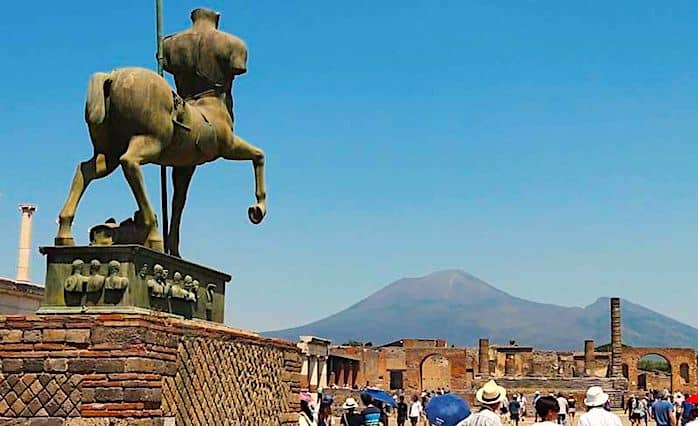
Just like the Roman Forum, the Forum of Pompeii was used as the center of activity and commerce in the town. It is where you will today find the city’s major Temples; the Temples of Venus, Apollo, and Jupiter. You will also find the grand Forum Baths there.
The actual Forum that you are looking at today was built between the 3rd and 2nd century BC. The axis of the square was changed to open on the Temple of Jupiter where earlier it had opened on to the Sanctuary of Apollo. The changes make sense because now you can get an epic view of Mt. Vesuvius from the Forum, although I am sure that the architects couldn’t fathom that this beautiful mountain peak would be their ultimate destruction within 2 centuries.
One needs to always use their imagination when looking at ancient sites, but Pompeii gives you more than most other sites. This entire Forum would have been surrounded by a beautifully adorned Portico and the entire center of the Forum would have been paved with travertine stone. Excavations were done by Maria Carolina Bonaparte and it was immediately clear that the decorations which adorned this area had already been stripped off in Ancient times.
3. Pompeii’s Forum Baths
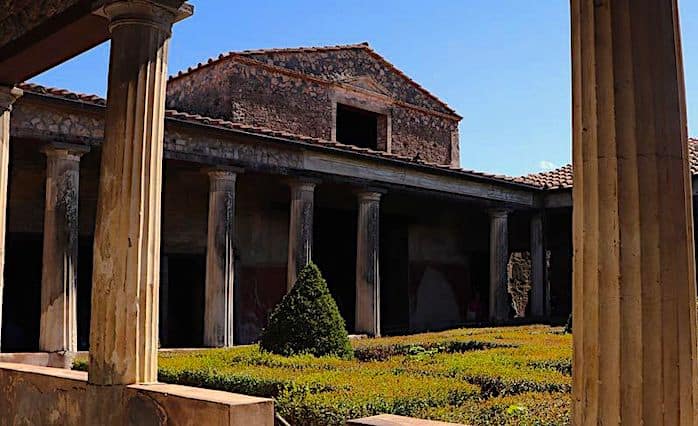
One common misconception is all ancient people were dirty and rarely bathed. In many cases this is true, but the ancient Romans were not this way. It might surprise you, but Roman citizens bathed every day and were clean-shaven ( the men of course). Though only the very rich could afford private baths, the public baths in the Forum were for people of all social statuses. The area was divided into men’s and women’s sections.
The baths that were located here by the Forum were built immediately after the area was colonized by the general Silla ( 80 BC). Like most buildings, these baths were heavily damaged during the earthquake of 62 AD. The beautiful decoration would have been during renovations done later on including the vault with elaborate stucco in relief and the terra cotta male figures which are known as Telemones. Ther is also a great bronze brazier which was used for heating up the room.
Going to the baths was a daily experience where one could stay inside for hours relaxing or even concluding business affairs. After undressing, it was normal to do some kind of physical activity to work up a sweat, then be covered in oil and have it scraped off you with a round instrument called a strigil. After that, you would either get a message or go to actually bath. The main three rooms of the ancient Roman Bath were the following, the tepidarium (warm bath), caldarium (hot bath), and frigidarium (cold bath). Classically one would bathe in each room in that order.
Popular Tours from Rome
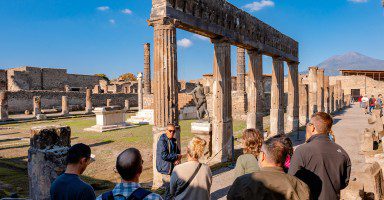
Best Seller
Unforgettable Rome Day Trip to Pompeii and Sorrento
Making a day trip from Rome to Pompeii and the Amalfi Coast can be daunting, with long travel times, complex routes, and tricky logistics to manage. Our full-day tour eliminates the stress, offering comfortbale transport straight to Pompeii. With an archaeologist guide, explore the ancient ruins without the hassle. Then, unwind with free time in Sorrento’s coastal charm. Led by a local guide and small group, this trip makes experiencing Italy’s highlights easy and enjoyable—all in one day.
See prices and more info
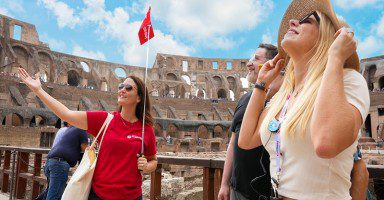
Best Seller
Rome in a Day Tour with Colosseum & Vatican Museums
Seeing the best of Rome in a single day might seem like a big undertaking, but our expertly designed tour makes it effortless with skip-the-line tickets, included transportation, and engaging guides to lead the way. In just 7 hours, you’ll visit renowned sites like the Sistine Chapel, Colosseum, Trevi Fountain, and Pantheon. With fascinating stories at every stop, you can skip the stress and immerse yourself in the vibrant heritage and culture of Rome all in one remarkable day.
See prices and more info
4. Pompeii’s Brothel

The world’s oldest profession had its place in ancient Rome, and the most evident example of this in Pompeii can be found in this building. The word in Latin for brothel was Lupanar. It derives from the word Lupa- or she-wolf which was a slang word for Prostitute in Ancient Rome, so what you were entering back in the day was a ” den of she-wolves”.
The prostitutes were slaves brought in to cement Pompeii as a city of sin. Surprisingly, we also know the names of many of the women who worked here due to graffiti left behind by happy customers.
This particular Lupanar was built on 2 floors with the owner and prostitutes sleeping upstairs and downstairs there were 5 individual rooms with a built-in bed ( see the photo above) and curtains would separate the rooms. The prostitutes were comprised of mostly Greek and oriental girls who were paid 2-8 asses ( Roman coins were the Ass, like a penny) per service. To put that into perspective, a glass of wine would cost around 1 ass.
As you entered the brothel, the first thing you would notice is all the interesting frescos lining the walls with various sexual positions. Since Pompeii was a port town, many foreigners would come that didn’t speak Latin and could just point to the painting of the services they desired. Also, there were phallic symbols in the paving stones in the streets leading up to the brothels so men knew exactly where to go.
5. The Palaestra
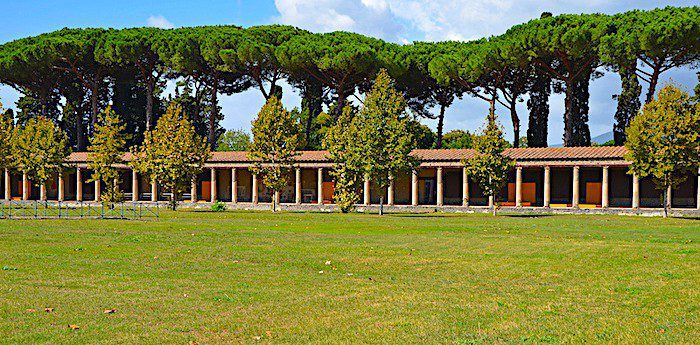
If you’re from Philadelphia, you will recognize the word palaestra from The Palestra on the campus of the University of Pennsylvania. Palaestra is the Latin word for “gym” and was similar to a modern-day gym consisting of areas for training and even a swimming pool.
Ancient doctors prescribed exercise, like today as a form of keeping yourself fit and healthy. They also believed this would help your mental bearings as well- Mens sana in corpore sano ( healthy mind in a healthy body). The word Palaestra actually originates from the Greek Pale for wrestling since it was one of the main exercises that men would do.
Just like today, men would also lift weights. In the palaestra, they would also wrestle, fence, box, and play games with balls like handball. Women would come to the Palaestra as well to exercise and their form was usually a game called Trochus which was pushing a metal loop with a hooked stick. The famous satirist Juvenal speaks of new-age women who also are lifting weights, doing a ” Man’s exercise”.
6. The Large Theater
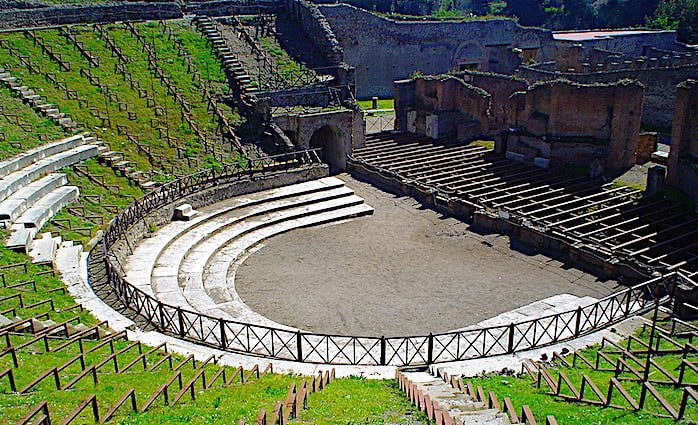
The Amphitheater was not the only center for entertainment in Pompeii. The large theatre held about 5,000 people and theater performances hosted here were usually Greek tragedies. It was built on the side of the slope of a hill like most Greek theaters and was semi-circular.
It was built in the 2nd century BC and afterward restored according to the Roman style of the time. This means that the seats were numbered and also a Velarium was put above. The velarium was essentially a dome, which was actually a type of tarp which would protect the spectators from the brutal sun. Surprisingly we even know the name of the architect who did modifications to the theater during the Augustan age. How? He left some graffiti with an inscription and his name on it- Marcus Artorius Primus.
The theater held various events with mostly comedies and tragedies according to both Greek and Roman traditions. The events themselves were almost always in conjunction with a festival or holiday to some god, especially the Ludi Apollinaris which celebrated the main god of Pompeii, Apollo.
7. Gladiator Barracks
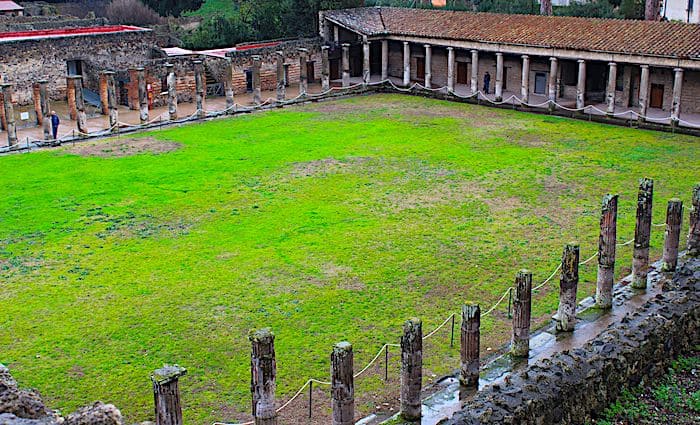
Gladiators have been immortalized to us today and were worshipped by the Ancients for their manly virtue and stoic look at death. However, the ironic aspect of this entire situation is that all gladiators were slaves, so they were at the same time belittled as a sub-human entity.
All gladiators were slaves- there were no exceptions. There were two kinds of slave gladiators. Those who sold themselves into slavery on purpose, due to high debt and those who were captured from far away lands and forced to be a slave gladiator.
In other words, if you were a free man and had too much debt, you could sell yourself into slavery, write up a contract for a number of fights and if you survived, get your freedom back. However, if you were conquered by the Romans and made a slave, you could be fighting for a very long time. Or like Spartacus, you could just start a slave rebellion that almost brought the Romans to their knees!
As the name implies, the gladiator barracks are where the gladiators lived and trained for their life and death matches at the Amphitheater. Think of a giant dorm room or a jail where they would be locked away at night. There is a large square with 24 columns surrounding it and were enclosed with small walls with pictures of hunting scenes.
Are you doubting that this area was used for gladiators? Doubt no more, since you will find over 120 inscriptions inside the building with Gladiator themed stories.
8. The Preserved Plaster Casts
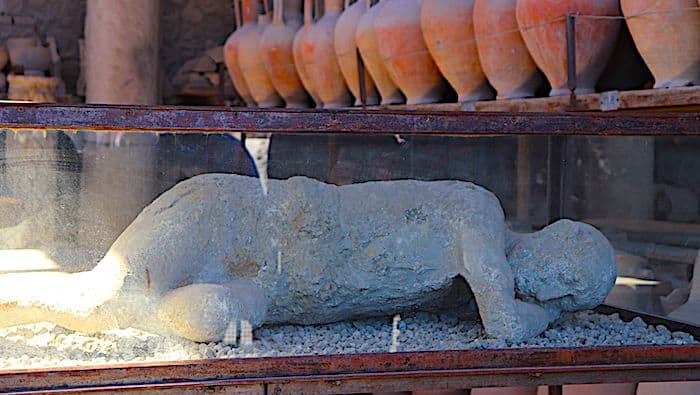
When they started excavating Pompeii, they noticed that around the skeletons, in the ash was a void. Therefore, by pouring plaster of pairs into the void, the final moments of so many were immortalized. Consequently, when you visit Pompeii, you are not only seeing ruins but are witnessing the final, intimate moments of many people’s lives. These are an amazing display of people in the positions they were in when they were preserved in ash on that fateful day including dogs, pregnant women, and children.
What were those last chaotic moments like? Luckily, we have one first-hand account by Pliny the Younger who was near Pompeii in Misenum together with his uncle, Pliny the Elder. Pliny the Elder had decided to go help friends in distress and never made it back. Pliny the younger, in a letter to a friend, describes it the following way:
“You could hear the shrieks of women, the wailing of infants, and the shouting of men; some were calling their parents, others their children or their wives, trying to recognize them by their voices. People bewailed their own fate or that of their relatives, and there were some who prayed for death in their terror of dying. Many sought the aid of the gods, but still more imagined there were no gods left, and that the universe was plunged into eternal darkness forevermore.”
A rotating exhibit around Pompeii, these casts were created during the excavations of the ruins. These are an amazing display of people in the positions they were in when they were encased in ash on that fateful day.
9. Villa dei Misteri
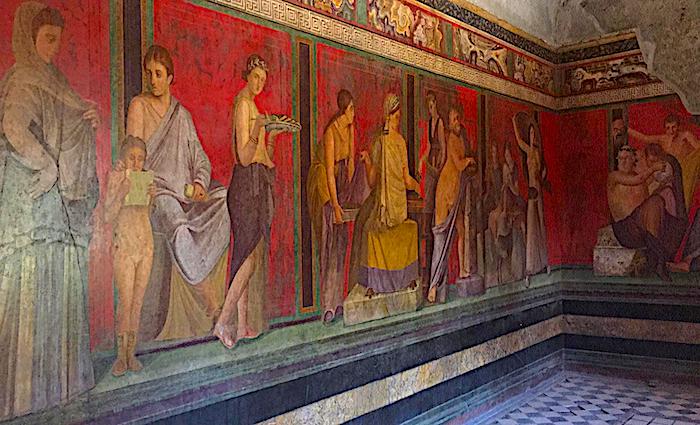
Translated as Villa of Mysteries, the name itself derives from a Fresco showing the initiation of a young girl into a ” Mystery” cult. To clarify, mystery rites were closely guarded secrets into a particular pagan cult where, as the name suggests, nobody outside of the cult would have any idea of what was going on.
Much of what has come down to us about these cults seemed to have involved the god Dionysus. As a result, we can safely assume that wine was an integral part of these rites and rituals since he was of course the God of wine. For example, we know that during the Bacchanal rites ( Bacchus was the Roman version of Dionysus) initiates would consume huge amounts of wine and work themselves into a frenzy where they would literally tear apart a live animal like a sheep and eat it raw.
The villa is a bit of a hike from the other sites and is actually outside the ancient walls of Pompeii. However, if you get a chance to visit, you will witness some of the best-preserved frescos of Ancient Rome. The fresco mentioned above during the mystery rites covers three entire walls of a house.
10. Temple of Apollo
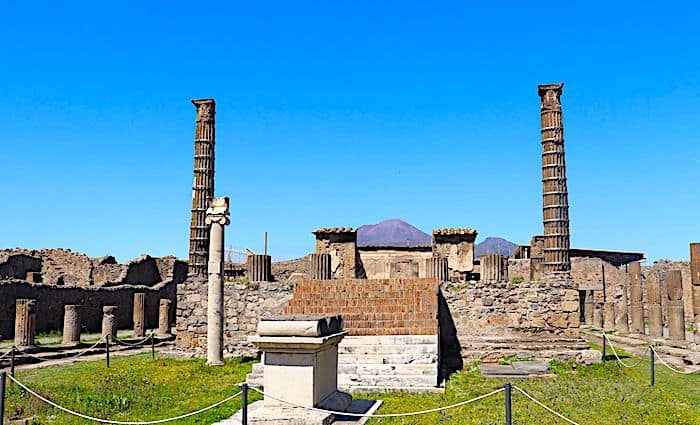
Apollo is one of the few gods whose name remained the same between Greeks and Romans ( Zeus became Jupiter- Hera Juno etc.) The fact that excavations have uncovered remains from an earlier temple from the 6th century BC, shows the strong presence of Apollo in Greek and Etruscan settlements in the area. As a result, archeologists have found artifacts from that pre-existing temple including votive items and terracotta decorations.
The building that is seen today would be dating from the 3rd-2nd century BC. It has a podium to bring oneself closer to the gods, with a Portico acting like a courtyard and there would have been an altar in the center. There was also likely a colonnade with a terrace that would have connected the temple with the square of the Forum.
The god Apollo was celebrated throughout the year, but the real party was during the Ludi Apollonares or the Apollo games. During this three day festival, the city would come alive with not only theatrical pieces, but also massive gladiator competitions. Meanwhile, these games were also to initiate boys and girls into the cult of Apollo and recognize him as one of the major gods ruling over them.
11. House of Vettii
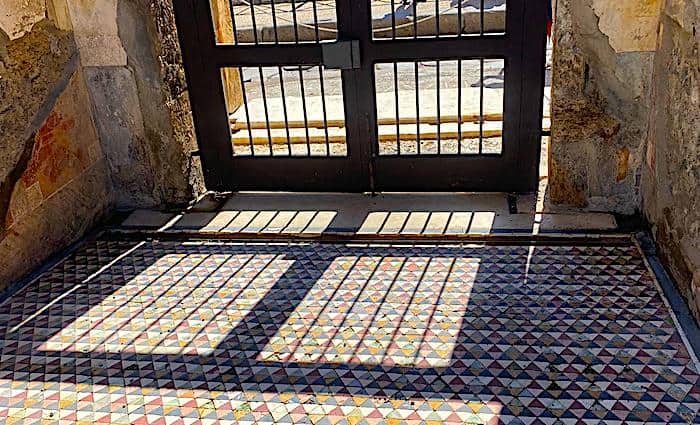
The name comes from 2 brothers ( Aulus Vettius Conviva and Aulus Vettius Restitutus) who were slaves and received their freedom. While the freeing of slaves was not an everyday occurrence, it did happen on a regular basis. Not able to reach the political ranks due to their social status, they found wealth through trade.
You can see where the gardens and Lararium were as well as the general plan of the house. Richly decorated rooms overlook the peristyle ( courtyard) and jets of water from fountains all over the palace display the riches this palace, and its owners possessed. In these rooms, were carried out the main productive activities of that time, from selling wine to cleaning clothes, cultivating flowers to harvesting, jewelry making to creating perfumes.
After reopening in 2016 after 12 years of restoration, the frescos you see here are some of the greatest examples of Ancient Roman artwork. There is also a famous fresco of the fertility god Priapus that has become famous over time. When you see it you will understand. At the entrance, you can see some graffiti which shows the prostitute Eutychus, who was a slave and offering her services in the next room over, where you can find exotic paintings, for only 2 asses ( about 2 cups of wine).
Popular Tours from Rome

Best Seller
Unforgettable Rome Day Trip to Pompeii and Sorrento
Making a day trip from Rome to Pompeii and the Amalfi Coast can be daunting, with long travel times, complex routes, and tricky logistics to manage. Our full-day tour eliminates the stress, offering comfortbale transport straight to Pompeii. With an archaeologist guide, explore the ancient ruins without the hassle. Then, unwind with free time in Sorrento’s coastal charm. Led by a local guide and small group, this trip makes experiencing Italy’s highlights easy and enjoyable—all in one day.
See prices and more info

Best Seller
Rome in a Day Tour with Colosseum & Vatican Museums
Seeing the best of Rome in a single day might seem like a big undertaking, but our expertly designed tour makes it effortless with skip-the-line tickets, included transportation, and engaging guides to lead the way. In just 7 hours, you’ll visit renowned sites like the Sistine Chapel, Colosseum, Trevi Fountain, and Pantheon. With fascinating stories at every stop, you can skip the stress and immerse yourself in the vibrant heritage and culture of Rome all in one remarkable day.
See prices and more info
12. House of the tragic poet
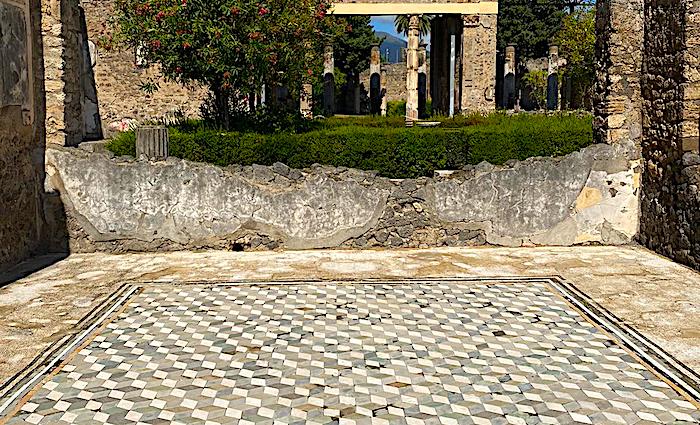
Why is it called the House of the Poet? The interesting name of this archeological find comes from a mosaic of an actor who is getting ready for a play. The building itself is actually full of fine mosaics either in the atrium, the tablinum, or near the Peristyle ( courtyard with fountain). Another fine mosaic to see here is Ariadne who is left by Theseus. Above all, the most important mosaic of the Cave Canem about which we will speak about below.
In today’s modern world we have photos and videos to show posterity what life was like. Similarly, the Ancient Romans have gifted us with mosaics. By studying these, it allows us to go back in time and study not only what people looked like, but also how they dressed! For example, by studying the mosaics that are currently in the Galleria Borghese, we know the outfits that gladiators used to wear from the extensive mosaics of gladiators fully suited up.
13. House of the Faun
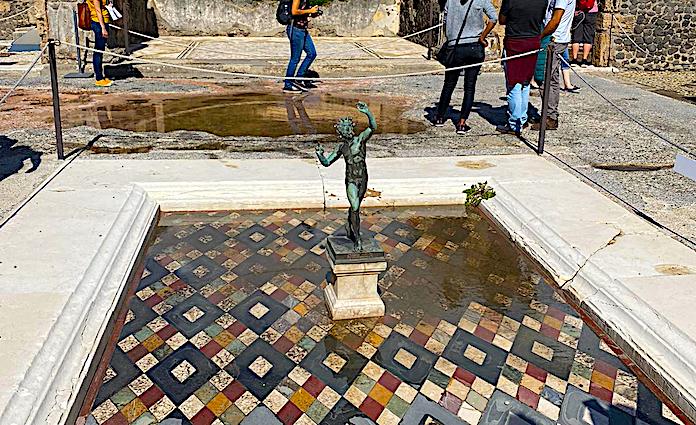
The House of the Faun was the biggest and most expensive house in Pompeii. The word “house” is actually a misnomer since it covers an entire city block at 32,000 sq ft ( 3,000 sq m). The owner had so much money he actually had a mosaic built into the street in front of his house with a Latin word ” HAVE” which means, greetings!
Archeologists have assessed that the super palace had various improvements and modifications made up until the eruption, but the original building dates back to 180 BC. The name of the building comes from a bronze statue of a Faun who is set above the impluvium. This was a basin-like structure that captured rainwater since there would be a hole in the roof above. which. Back in the day, someone would have been able to see this statue if they peered from the main doorway into the house.
It is worth noting that the famous Alexander mosaic was originally housed in this palace. Unfortunately, you won’t be able to see the mosaic now, since it is in the Archeology Museum of Naples. However, it is interesting to note that the famous Battle of Issus, where Alexander crushed Darius, only happened 150 years before this palace was built.
14. Cave Canem Mosaic
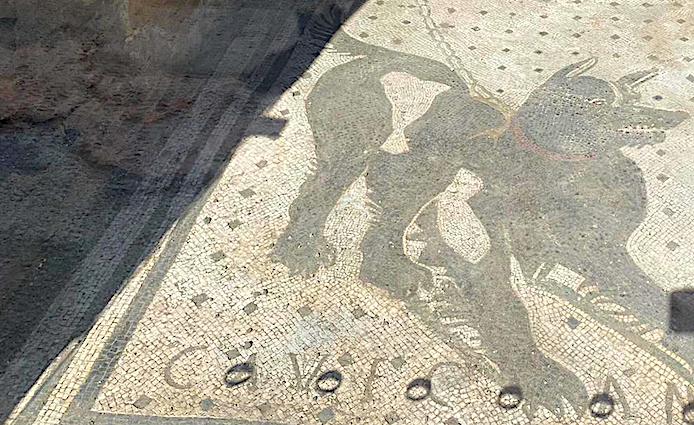
At the entrance to the House of the Tragic Poet (see above) there is a mosaic of a dog with letters, which was to act like a doormat, below it that says in Latin – Cave Canem- which translated means- Beware of the dog. This just goes to show you that we haven’t changed after 2,000 years.
The black-haired dog is seemingly crouching back in the attack position with its full set of teeth bared, daring anyone to enter at their own risk. This beautiful mosaic was recently restored and now has a protective casing over it which allows people to see it completely and at the same time protects from any damage.
15. Mt. Vesuvius
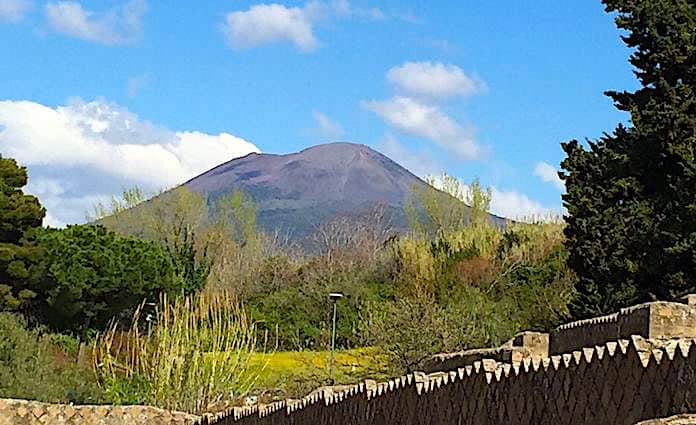
Yes, the most famous volcano of all times is not situated in the architectural complex of Pompeii and is not even in the city itself, but I would be remiss not to mention it. While the last eruption was in 1944, don’t worry, since the experts say we should have some time before the next big one happens.
On August 24th, 79 AD Mt. Vesuvius unleashed its fury by sending a smoke cloud 10 miles into the air and pelting the city with fire and pumice missiles. The following day, those who stayed in the city ( supposedly around 2,000) were killed by a toxic gas that swept through the city. According to Pliny the Younger, the eruption lasted for 18 hours. Consequently, the city itself was completely wiped out and was buried under 20 feet of ash and pumice.
Only a short drive away, to make your Pompeii journey complete, you should definitely go and check out the volcano that made Pompeii famous to us today! If you don’t have a car and are staying in Rome, come join us for the adventure on our Private Pompeii and Vesuvius Day Trip.
Pompeii Tours
Check out our most popular Pompeii tours. This article is here to help but the best way to see Pompeii is with a licensed guide of the area.

